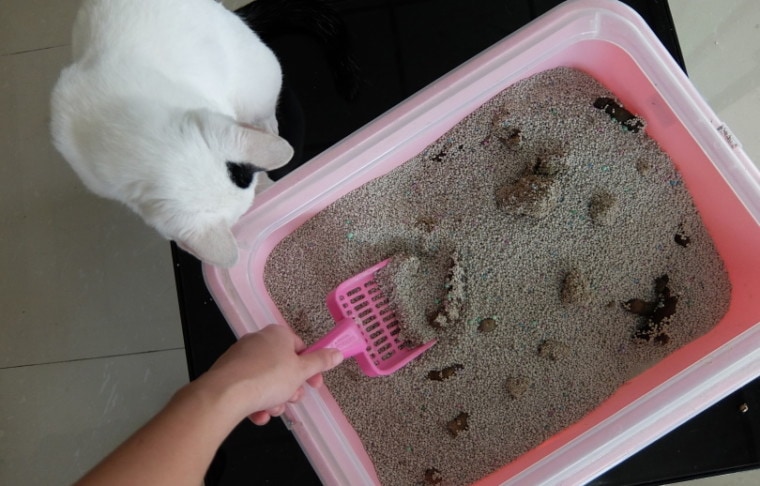
Click to Skip Ahead
Disposing of cat poop is an unpleasant, smelly chore, but somebody has to do it to keep our favorite felines happy and healthy. Knowing how to properly dispose of your cat’s poop is essential to supporting the environment and keeping your family safe from health risks like parasites or breathing issues.
Before You Start
Cat poop disposal doesn’t start when you scoop the litter box. Properly disposing of your feline’s waste includes choosing the right litter for your cat, the right box, and the right method of disposal.
First, here’s a rundown on the popular litter types to help you decide which one you should use. Remember, the litter is as much your cat’s choice as your own. If your cat doesn’t like the litter you’ve picked, they’ll never use it.
Cat Clay Litter

The oldest and most popular kitty litter is made from either fine clay particles or larger chunks. It comes in two types: clumping, for cat owners who scoop liquid waste regularly, or non-clumping, for people who prefer to empty the entire box when they clean out the poop. There are also options with fragrances or less dust.
Cat Silica Gel Litter

Although more expensive than clay litter, silica gel litter isn’t as dusty and generally lasts longer. It also absorbs urine so you don’t have to clean the tray as often.
Environmentally Friendly Cat Litter
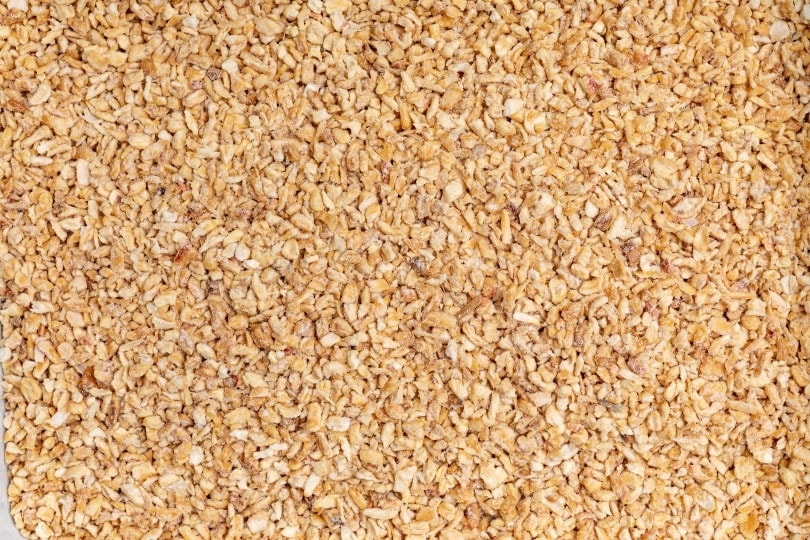
If you dislike using clay litter due to the damage that it can cause to the environment, there are several eco-friendly alternatives that you can use. They all have their pros and cons, but they’re all natural-based and non-toxic to your cat.
Where to Dispose of Cat Poop
There are several ways to dispose of cat poop, and some methods are more acceptable than others. If you’re new to cat ownership, this guide will show you how to clean your feline’s litter tray and dispose of the waste.
Toss It in the Trash
The most reliable method of disposing of your cat’s poop is by bagging it and throwing it away with the rest of your household trash. While this isn’t the most environmentally-friendly option, especially if you use a plastic carrier bag to dispose of your used litter, it’s simple and effective.
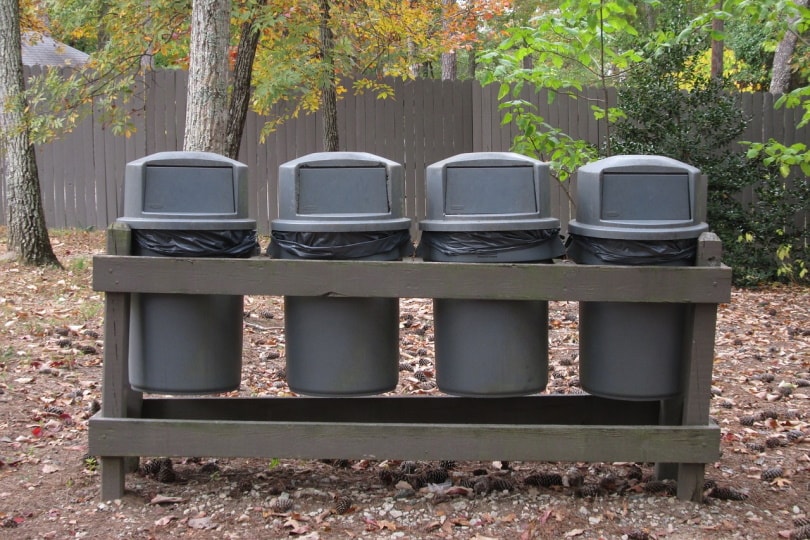
How to Dispose of Cat Poop: Step-by-Step Guide
1. Wear Gloves
Your cat’s poop is unpleasant to handle, and it’s even more so when you consider the bacteria and parasites that it can carry. Wearing gloves might seem overly cautious, but there is a reason for concern, though.
Toxoplasma gondii is a parasite that your cat can carry that causes toxoplasmosis, especially in pregnant people and the immuno-compromised. Wearing gloves will help you minimize your contact with your kitty’s poop and act as a barrier between you and infection. This is especially true if you have open cuts on your hands.
If you’re worried about dust from the litter affecting your breathing, you can wear a mask too.

2. Grab a Bag
It’s not a good idea to empty your kitty litter straight into your trash, which is where a separate, sealable bag comes in handy. Leaving the used kitty litter loose in your trash will allow the odor to linger and bacteria to be released into the air.
Sealable pet waste bags work best because they’re designed to contain both the smell and the waste products from your pets. You can also use biodegradable or paper bags if you prefer to use something more environmentally friendly.
In a pinch, though, you can use plastic shopping bags. Such a bag won’t do much for your carbon footprint, but you can easily tie the top and drop it in your trash until you get an eco-friendly alternative.
Whatever bag you use, make sure it’s big enough to hold your cat’s waste from all your litter trays. It should also be sturdy enough to hold the weight of your pet’s waste. You can use another bag if you need to, but try to choose a heavy-duty option so you’re not tossing loads of bags.

3. Scoop the Poop
The type of litter that you use will make scooping the litter faster or more time-consuming. Non-clumping litter is simpler because you just have to tip the contents of the tray into the bag. You’ll go through it much faster this way, but it saves time when you clean the tray. Emptying the litter tray regularly gives you a good excuse to clean it out properly.
Clumping litter requires more work. You’ll need a litter scoop to collect the clumps of used litter and the poop. Deposit all the used litter into a bag.
Note: Avoid disposable scoops, especially if you want to minimize your impact on the environment. Stainless steel scoops are sturdier and last longer than plastic. Make sure to buy one with holes to let the clean litter fall back into the pan.
4. Refill the Litter Tray
Whether you use clumping or non-clumping litter, you should always top up the tray with fresh litter once all the used litter is gone. Make sure there are at least several inches of litter in the tray so your cat can still dig and bury their waste.
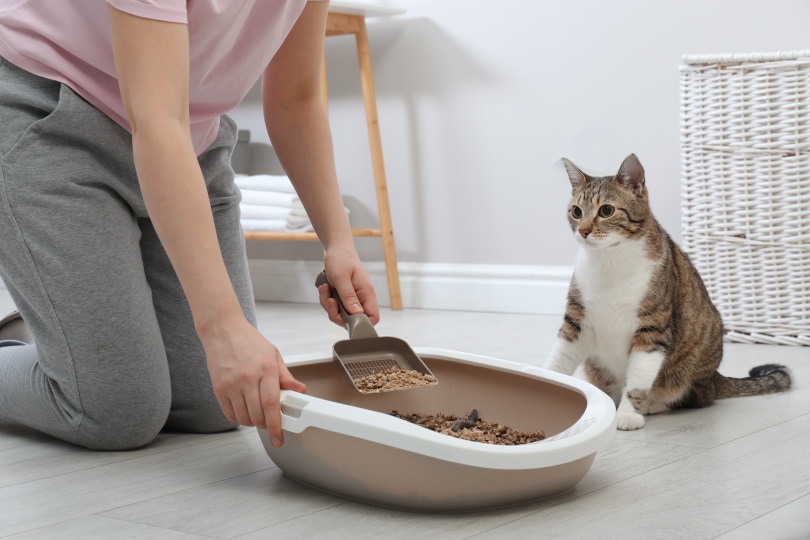
5. Toss the Poop
Once the used litter from all your cat’s litter trays is in the waste bag, seal it and chuck it in the trash. Sealing the used litter in a separate bag helps contain both the smell and any harmful bacteria contained in your feline’s waste.
6. Wash Your Hands
Even if you wear gloves, washing your hands is an important final step when it comes to cleaning litter trays. Use soap and warm water to wash your hands for at least 20 seconds.
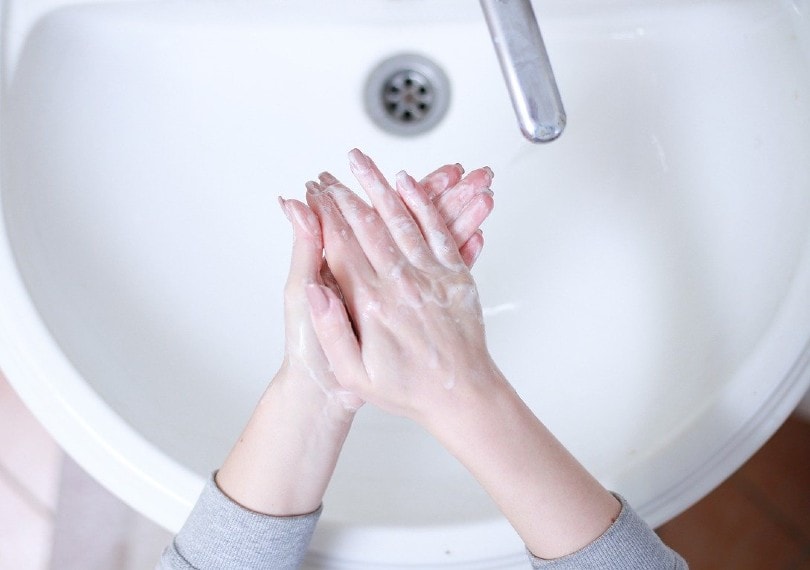
Can You Compost Used Kitty Litter?
You can buy biodegradable kitty litter, which raises the question of whether you can throw your cat’s waste in the compost. This isn’t easy to answer, simply because of the health risks associated with cat poop.
In general, it’s safer to throw your used kitty litter into the trash. However, you can compost some biodegradable litters and even buy pet waste composters. There are a few caveats to this, though.
The Type of Litter
You have to make sure your kitty litter is suitable for composting. Even if the box states that it’s biodegradable, it might contain clay or fragrances that make it unsuitable for adding to any type of compost. It can also be toxic to your cat.
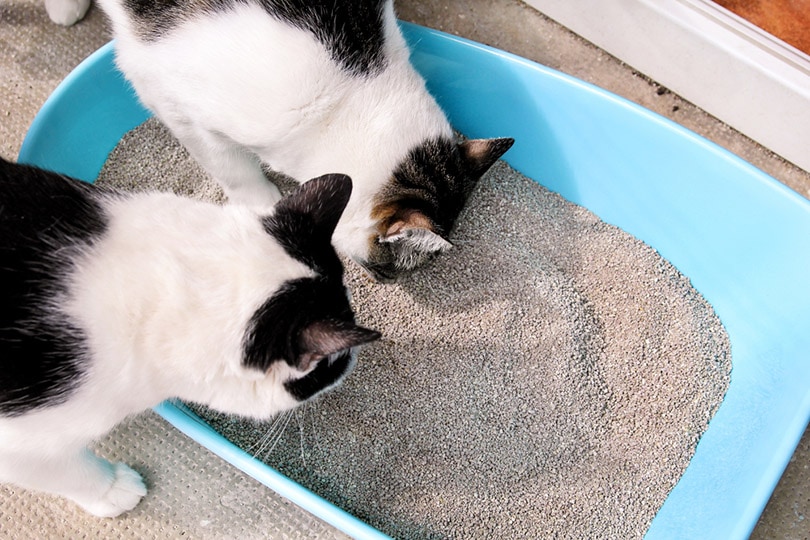
Don’t Use on Vegetables
You should never use pet waste on your vegetable patch. You can use it on your rose garden, but keep it away from anything that humans will eventually eat. This is due to the bacteria and parasites contained in cat poop. Toxoplasma gondii isn’t broken down during the composting process and will transfer to your vegetables if used as fertilizer.
Can You Flush Used Kitty Litter?
Many people flush their kitty litter as a way to dispose of it. This isn’t a good idea for two reasons.
Many flushable kitty litters aren’t suitable for many sewer systems — whether you’re on a city system or a septic tank doesn’t make a difference. Once the pipes are clogged, the damage is done.
Also, many water filtration systems don’t remove parasites like Toxoplasma gondii. By flushing your cat’s infected poop, you’re inadvertently contaminating the water supply too. While clogged drains can be cleared eventually, the health risks posed to your neighborhood can be much more serious.
Final Thoughts
Disposing of your cat’s poop is unpleasant but not difficult. Don’t fall into the trap of flushing your cat’s poop to avoid handling it for too long. Not only can the litter block the drains, but the parasites in pet waste also aren’t removed during the filtration and cleaning process.
Tossing cat poop with the rest of your household trash isn’t the most environmentally friendly solution, but it’s the most hygienic option.
Featured Image Credit: Ninotee, Shutterstock







